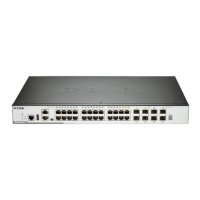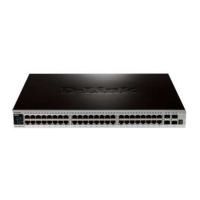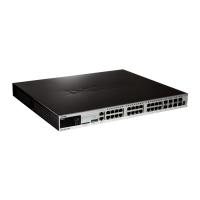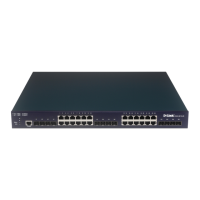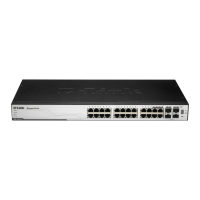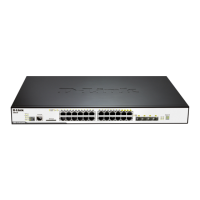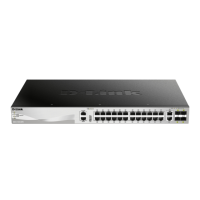DGS-3630 Series Layer 3 Stackable Managed Switch Web UI Reference Guide
335
The fields that can be configured in BGP Trap Settings are described below:
Parameter Description
Peer Established Trap State
Select to enable or disable the BGP peer established trap state here.
Peer Backward-Trans Trap
State
Select to enable or disable the sending of the peer idle trap here.
Click the Apply button to accept the changes made.
BGP Aggregate Address Settings
This window is used to display and configure the BGP aggregate address settings. Route aggregation is a mechanism
used to reduce the number of routing entries. The aggregated route will be created in the routing table if there is any
more specific route entry than the aggregated route, and the characteristic of the aggregated route is the combined
characteristic of those more specific routes. The aggregated route is sent as coming from the local AS. The atomic
aggregation flag is set to indicate that the AS path information of those more specific route information might be lost
from the aggregated entry.
To view the following window, click L3 Features > BGP > BGP Aggregate Address Settings, as shown below:
Figure 6-170 BGP Aggregate Address Settings Window
The fields that can be configured are described below:
Parameter Description
Address Family
Select the address family to use here. Options to choose from are:
• IPv4 Unicast - Specifies to use IPv4 unicast address family here.
• IPv4 VRF - Specifies to use the VRF instance here. Enter the name of the
VRF instance in the space provided or click the Please Select button to
select a pre-configured VRF instance that will be used here. This name can
be up to 12 characters long.
• IPv4 Multicast - Specifies to use IPv4 multicast address family here.
• IPv6 Unicast - Specifies to use IPv6 unicast address family here.
Network Address
Enter the IPv4/IPv6 aggregate address and mask here.
Summary Only
Select this option to filter those routes that are more specific than the aggregated
route.
AS Set
Select this option to generate autonomous system set path information.
Click the Apply button to accept the changes made.
Click the Find button to locate a specific entry based on the information entered.
Click the Delete button to remove the specific entry.
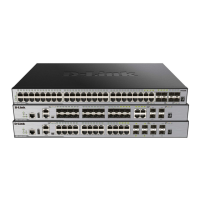
